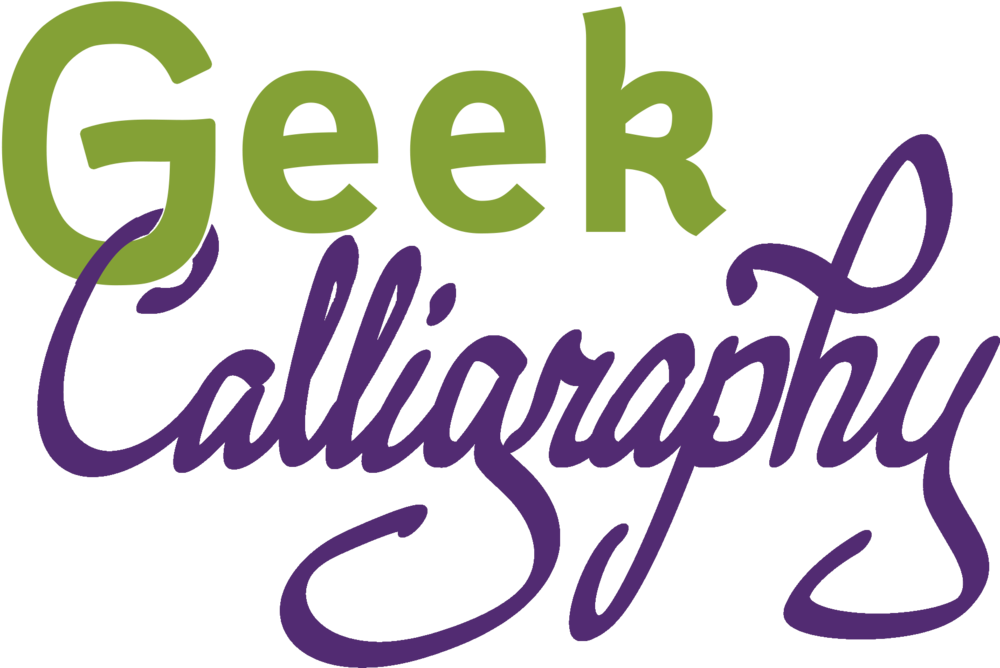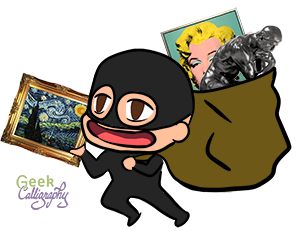Looking for something that seamlessly blends classic Judaic imagery with outstanding steampunk art? Perhaps something seasonally appropriate? Look no further than this print!
Normally we wouldn't be releasing a product this early in the month, but next Wednesday is the day before Rosh HaShana. At that point, we will be taking our usual 4 week break for the fall Jewish holidays.
how it came to Be:
For some reason, Ariela seems to like doing religious steampunk art, even she is not sure why. Maybe it's the result of working for an art nouveau ketubah artist for several years.
While staring at a wall hanging of some rather poorly embroidered pomegranates in synagogue, it occurred to her to depict a pomegranate full of gears instead of seeds. All it needed was a textual tie-in, because we are a calligraphy outfit, and we don't generally put out art without text.*
Ariela thought of one of her favorite pieces in the Yom Kippur liturgy, a piyyut** known by its first line, Ki Hinei KaChomer. This poem refers to God in a variety of creative and skilled roles, rhyming virtues of God with the destructive aspect of each role. Below is the full English*** and Hebrew text of that poem:
Like clay in the potter’s hands –
Expanded or contracted at will –
So are we in Your hand, Guardian of loving-kindness;
Look to the covenant, and disregard our inclination.
Like a stone in the stonecutter’s hands –
Held fast or smashed at will –
So are we in Your hand, Source of life and death;
Look to the covenant, and disregard our inclination.
Like an axe-head in the blacksmith’s hands –
Held to the flame or distanced from it at will –
So are we in Your hand, Supporter of the poor and destitute;
Look to the covenant, and disregard our inclination.
Like the helm in the sea captain’s hands –
Held fast or released at will –
So are we in Your hand, beneficent and forgiving God
Look to the covenant, and disregard our inclination.
Like glass in the glassblower’s hands –
Shaped or dissolved at will –
So are we in Your hand, Forgiver of willful and inadvertent sins;
Look to the covenant, and disregard our inclination.
Like cloth in the weaver’s hands –
Straightened or twisted at will –
So are we in Your hand, jealous and avenging God;
Look to the covenant, and disregard our inclination.
Like silver in the silversmith’s hands –
Adulterated or purified at will –
So are we in Your hand, Provider of healing to the sick;
Look to the covenant, and disregard our inclination.
כִּי הִנֵּה כַּחֹמֶר בְּיַד הַיּוֹצֵר
בִּרְצוֹתוֹ מַרְחִיב וּבִרְצוֹתוֹ מְקַצֵּר
כֵּן אֲנַחְנוּ בְיָדְךָ חֶסֶד נוֹצֵר
לַבְּרִית הַבֵּט וְאַל תֵּפֶן לַיֵּצֶר
כִּי הִנֵּה כָּאֶבֶן בְּיַד הַמְסַתֵּת
בִּרְצוֹתוֹ אוֹחֵז וּבִרְצוֹתוֹ מְכַתֵּת
כֵּן אֲנַחְנוּ בְיָדְךָ מְחַיֶּה וּמְמוֹתֵת
לַבְּרִית הַבֵּט וְאַל תֵּפֶן לַיֵּצֶר
כִּי הִנֵּה כַּגַּרְזֶן בְּיַד הֶחָרָשׁ
בִּרְצוֹתוֹ דִּבֵּק לָאוּר וּבִרְצוֹתוֹ פֵּרַשׁ
כֵּן אֲנַחְנוּ בְיָדְךָ תּוֹמֵךְ עָנִי וָרָשׁ
לַבְּרִית הַבֵּט וְאַל תֵּפֶן לַיֵּצֶר
כִּי הִנֵּה כַּהֶגֶה בְּיַד הַמַּלָּח
בִּרְצוֹתוֹ אוֹחֵז וּבִרְצוֹתוֹ שִׁלַּח
כֵּן אֲנַחְנוּ בְיָדְךָ אֵל טוֹב וְסַלָּח
לַבְּרִית הַבֵּט וְאַל תֵּפֶן לַיֵּצֶר
כִּי הִנֵּה כִּזְכוּכִית בְּיַד הַמְזַגֵּג
בִּרְצוֹתוֹ חוֹגֵג וּבִרְצוֹתוֹ מְמוֹגֵג
כֵּן אֲנַחְנוּ בְיָדְךָ מַעֲבִיר זָדוֹן וְשֶׁגֶג
לַבְּרִית הַבֵּט וְאַל תֵּפֶן לַיֵּצֶר
כִּי הִנֵּה כַּיְרִיעָה בְּיַד הַרוֹקֵם
בִּרְצוֹתוֹ מְיַשֵּׁר וּבִרְצוֹתוֹ מְעַקֵּם
כֵּן אֲנַחְנוּ בְיָדְךָ אֵל קַנֹּא וְנוֹקֵם
לַבְּרִית הַבֵּט וְאַל תֵּפֶן לַיֵּצֶר
כּי הִנֵּה כַּכֶּֽסֶף בְּיַד הַצּוֹרֵף
בִּרְצוֹתוֹ מְסַגְסֵג וּבִרְצוֹתוֹ מְצָרֵף
כֵּן אֲנַחְנוּ בְּיָדְךָ מַמְצִיא לְמָזוֹר תֶּֽרֶף
לַבְּרִית הַבֵּט וְאַל תֵּפֶן לַיֵּצֶר
For obvious reasons, this poem has always resonated with Ariela as an artist. The stanza of the poem that she felt fit this image best is the third one, which references a blacksmith shaping an iron axe-head. Steampunk, after all, is full of iron. So the Hebrew version of this print has the lines "כִּי הִנֵּה כַּגַּרְזֶן בְּיַד הֶחָרָשׁ / בִּרְצוֹתוֹ דִּבֵּק לָאוּר וּבִרְצוֹתוֹ פֵּרַשׁ / כֵּן אֲנַחְנוּ בְיָדְךָ" and the English version has "Like iron in the hand of the metalworker, / Who welds or separates at will; / So, are we in your hands, O Lord." The English has been modified somewhat from the standard translations to be more appropriate for the setting.
The Hebrew font was picked by surveys on Twitter and Facebook, with a confirmation that the choice was a good when when Ariela saw it in some older printed books. The English is a nice older typeface. Both texts are intentionally aged and distressed.
Steampunk Pomegranates in both English and Hebrew are available in an 8"x10" matted print, for $30.
*Sometimes the art is only text, but hey, calligraphy outfit
**Medieval liturgical poem
***Translation comes courtesy of the Koren Yom Kippur Machzor



![Rawhide being shaped into tefillin. [Image shows large sheets of ivory colored rawhide with vague and then more precise box shaped protrusions in one end. In the front are unpainted tefillin boxes]](https://images.squarespace-cdn.com/content/v1/56565a97e4b0acafe106535a/1505090836533-M4UERN021G3P7UPF10J2/tefillin_01.jpg)
![An example of healthy tefillin. [Image shows a very angular black tefilah***** for the arm. It is comprised of a cube on top of a stitched regtangular base, with black leather straps running through it.]](https://images.squarespace-cdn.com/content/v1/56565a97e4b0acafe106535a/1505090719489-BPALAQYPU8I6CB296GP2/Tfilin_shel_yad.jpg)







![Half of Reading Station/תחנת קריה. This is an old bus stop, repurposed into a free library. [Image shows a man, woman and stroller in front of a bus shelter filled with bookshelves]](https://images.squarespace-cdn.com/content/v1/56565a97e4b0acafe106535a/1502565935280-OGPO27C9M382OV3O3K0Z/image-asset.jpeg)
![Wine grapes (either cabernet or malbec) at the Tzuba Winery. [Image shows two clusters of blue-purple grapes amid healthy green leaves]](https://images.squarespace-cdn.com/content/v1/56565a97e4b0acafe106535a/1502599545239-7N1HDLLZ19RV57CWL5X7/image-asset.jpeg)

![A solo cat and a cat who owns a person consider each other, rather like the cats in The Aeronaut's Windlass. [Image shows a thin cat with a white belly and calico back staring down a much more well fed grey and black tabby with a red collar]](https://images.squarespace-cdn.com/content/v1/56565a97e4b0acafe106535a/1502566835316-YXD030TC8ZUW813F6EM4/image-asset.jpeg)
![Monster at the western retaining wall of the Temple Mount (also known as The Kotel). [Image shows a small child in a red t-shirt and rainbow skirt touching the stones of a wall that's over 2000 years old.]](https://images.squarespace-cdn.com/content/v1/56565a97e4b0acafe106535a/1502598716525-14YIF7P5BSQ9G98E0KAC/image-asset.png)
![Making friends with a boa constrictor at the Biblical Museum of Natural History. [Image shows me with a large brown snake wrapped around my arms whose head is extending up my neck. The expression on my face is half amused, half terror]](https://images.squarespace-cdn.com/content/v1/56565a97e4b0acafe106535a/1502566658164-C66EJ9RZYBMAUGR1OVCB/image-asset.jpeg)

![Classic shot of the Kotel and Temple Mount. [Image shows the stone wall of the Temple mount and the gold dome of the Dome of the Rock mosque]](https://images.squarespace-cdn.com/content/v1/56565a97e4b0acafe106535a/1502599120393-F5ZFT8SX7FAFI3OOMLE4/image-asset.jpeg)







